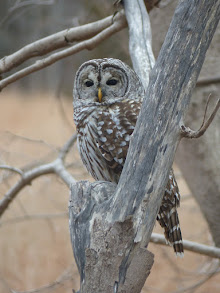

Artwork by Richard Doyle from The Scouring of the White Horse by Thomas Hughes. These illustrations are not in the copy I have, which is the American edition published by Ticknor & Fields in 1859. The elaborate titling, which I'm guessing is supposed to evoke the twisted branches of a hedgerow, reads The Scouring of the White Horse / A Country Legend.
The scene depicted, of stout Saxon warriors exuberantly memorializing King Alfred's victory over the Danes in 871 AD, is anachronistic, as it is no longer believed that the stylized hill figure known as the Uffington White Horse has anything to do with Alfred or with Anglo-Saxon England at all. It was carved into the chalk of the Berkshire Downs, in essentially the design in which it appears to this day, in the late Bronze Age (c. 800-1000 BC), and would have disappeared long ago had it not been periodically "scoured" of encroaching turf. That more than a hundred generations of Celts, Romans, Anglo-Saxons, and Normans not only refrained from obliterating the carving but actually went to the trouble of renewing it from time to time is, when you think about it, fairly astonishing. Perhaps it served as a convenient excuse for merrymaking -- it certainly did so in Tom Hughes's day. Whether the horse -- if that's indeed what it is -- was originally intended as a religious symbol or as some kind of territorial or tribal marker no one now knows.
The White Horse is located above the village of Uffington in what used to be part of Berkshire but is now Oxfordshire. From Oxford, where we were staying, it can be reached by taking a bus to the market town of Wantage, which has an excellent small museum devoted to the history of the region, and then a second bus that stops at the isolated crossroads below White Horse Hill. We scaled the hill the hard way, across its face through pastureland that was muddy in spots, not realizing that there was a paved road to the top of the ridge. Even on a fair March day -- there were paragliders soaring above us, and the views were splendid from the summit -- the site was uncrowded. A small flock of sheep just a few meters from the carving ignored our approach and only broke away when we strode right through their midst.
 We sat down to catch our breath near the head of the figure, and while we were there passed our copy of an illustrated guidebook to a fellow climber so that he could prove to his skeptical son that he was indeed standing next to a giant horse, as the full outline of the carving, which measures more than 100 meters from nose to tail, is best seen from a distance or from above. Above and behind the horse, on the crest of the hill, are the earthworks of an Iron Age fort known as Uffington Castle. The Ridgeway, an ancient trail that runs through the Downs and on to Avebury, passes over the hill, and if you follow it west for a mile or so you will come to Wayland's Smithy, a fine Neolithic chambered long barrow sheltered in a beech grove.
We sat down to catch our breath near the head of the figure, and while we were there passed our copy of an illustrated guidebook to a fellow climber so that he could prove to his skeptical son that he was indeed standing next to a giant horse, as the full outline of the carving, which measures more than 100 meters from nose to tail, is best seen from a distance or from above. Above and behind the horse, on the crest of the hill, are the earthworks of an Iron Age fort known as Uffington Castle. The Ridgeway, an ancient trail that runs through the Downs and on to Avebury, passes over the hill, and if you follow it west for a mile or so you will come to Wayland's Smithy, a fine Neolithic chambered long barrow sheltered in a beech grove.There's no gift shop or visitor's center on White Horse Hill, and I for one hope there never is, as the bleak, peaceful solitude of the place allows one to better contemplate the views of the surrounding countryside as well as the vast expanses of time that are in evidence. There was a lone vendor selling ice cream from a van; we passed on the ice cream but took him up on what he solemnly promised was the best hot chocolate in the world. And it wasn't bad at that.
Tom Hughes's novel The Scouring of the White Horse is still enjoyable reading, although more reliable for its glimpses of Berkshire folklife than for its archaeology. Kate Bergamar's Discovering Hill Figures, in the Shire Classics series, is an excellent portable guide to the Horse and similar figures, most of which are far more recent in origin. The latest archaeological evidence is surveyed in Uffington White Horse in its Landscape, by C. Gosden et al.
Photo by Maddie.




No comments:
Post a Comment